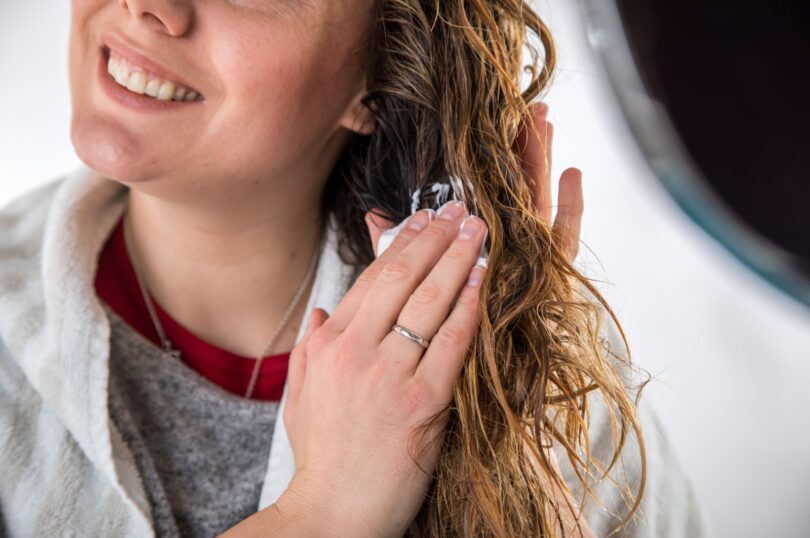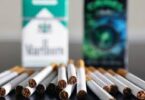BERLIN (DPA) : Occasional bad hair days are a common experience for many of us, particularly during winter. The continuous shift between cold outdoor air and dry, heated indoor air, coupled with the compression of a hat, can truly disrupt your hair.
Fortunately, with a few tips, you can maintain the health of your hair and shield it from winter-related damage. Here’s some expert advice to keep your hair healthy:
Remedy for flyaways
This is a familiar problem: Strands of hair stick out antenna-like and are almost impossible to tame. It typically happens when you take off your hat or cap, the friction causing a buildup of static electricity – all the more so if your hair is very dry. The problem is exacerbated by warm, dry indoor air.
Birgit Huber, a cosmetics expert for the German Cosmetic, Toiletry, Perfumery and Detergent Association (IKW), recommends using haircare products that “supply the hair and scalp with plenty of moisturizing substances and intensive care ingredients.” Shampoo and conditioner additives such as panthenol help to minimize hair dryness, she said. “Even more comprehensive are intensive haircare treatments that repair brittle areas and make the hair structure smooth again.”
The treatments are particularly effective, she said, when your hair is kept warm. So it’s best to wrap a towel around it and let the treatment soak in for several minutes. “As an alternative, there are hair sheet masks – with a fleece lining containing haircare ingredients – that you place directly on your hair,” Huber said.
Master hairdresser Antonio Weinitschke, art director for the German Hairdressing Association, has an emergency tip for taming annoying flyaways: Use a moisturizing spray. “You briefly mist your hair and run your fingers through it, which discharges the static and stops flyaway hair,” he said.
A tip to help keep your hair from drying out: Use a low heat setting when you blow-dry it.
Things to keep in mind when blow-drying your hair
To prevent damaging your hair, Weinitschke advises always blow-drying it at an angle away from the roots and toward the ends. The reason: to protect the cuticles, the outermost layer of hair, which is made of flattened, overlapping cells – like roof shingles – that point away from the roots. “If you blow-dry toward the roots, you roughen the cuticles,” he explained. “And this damages the hair’s inner layer by allowing the penetration of heat.”
This makes your hair look dull. But if you blow-dry toward the hair ends, said Weinitschke, you seal – or flatten – the cuticles. “And your hair shines.”
Before blow-drying your hair, it’s also a good idea to use a heat protectant, in spray form for example. “The sprays provide your hair with a protective cover, preventing it from drying out,” said Huber. Many of them also contain ingredients such as oils or aloe vera, which nourish the hair as well.
Weinitschke recommends using a blow dryer with a nozzle, “which allows you to better focus the airflow.” And he warns against directing the flow too long on one area because “the heat from blow dryers is too high for this.”
Preserving your hairstyle under hat
This naturally depends on the hairstyle. In any case, to keep it from going flat, Weinitschke suggests running your fingers through your hair against the direction it grows, before you put on a hat or cap. “Then more volume will be left around the roots when you take it off,” he said.
Huber’s safeguard against “hat hair” is to spray dry shampoo directly onto the roots and then style your hair. “When you take off the hat, just massage your scalp briefly with your fingertips, and the volume quickly comes back,” she said.
Her “ultimate tip” for people with short hair: Warm up a small amount of hair wax in the palms of your hands, quickly distribute it in your hair and then do your hairstyling. “When the wax has cooled, the form remains,” said Huber. “If the hat was too snug anyway, you can easily warm up individual sections of hair between your fingers and restyle a little.”
How much your hairstyle suffers under a hat also depends on what kind of hat it is. Head-hugging beanies are less hairstyle-friendly than loose-fitting berets, for instance.
Another tip: When worn frequently, hats and caps made of rough-texture material can damage the structure of your hair by rubbing against it. So Weinitsche recommends headwear lined with a smooth material that doesn’t roughen your hair.







